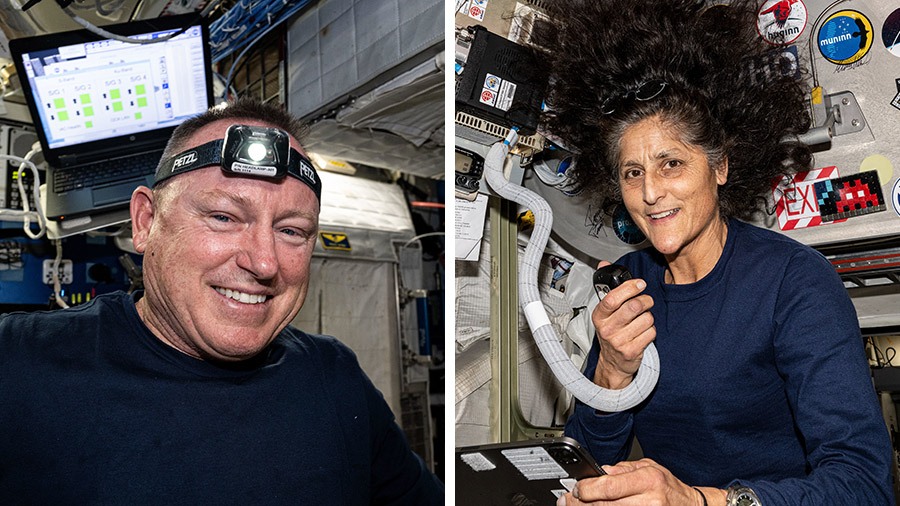
The crews representing Expedition 71 and NASA’s Boeing Crew Flight Test had a light duty day aboard the International Space Station at the end of the week. In the meantime, a Roscosmos cargo craft is due to deliver nearly three tons of cargo early Saturday morning.
NASA Flight Engineer Tracy C. Dyson started her day installing 3D-mapping gear on the Astrobee robotic free-flying assistant in the Kibo laboratory module. The cube-shaped, toaster-sized Astrobee will use the imaging device’s lasers and lenses to autonomously navigate and maneuver on the station and conduct docking operations. Afterward, she powered up the KERMIT state-of-the-art microscope in the Destiny laboratory module and imaged stem cell samples for a cancer treatment investigation.
NASA Flight Engineers Mike Barratt and Jeanette Epps worked on orbital plumbing and life support maintenance in the Tranquility and Unity modules. Butch Wilmore and Suni Williams, Starliner Commander and Pilot respectively, worked on science gear maintenance inside Destiny and continued to unpack cargo from Northrop Grumman’s Cygnus space freighter.
NASA Flight Engineer Matthew Dominick reviewed emergency procedures in the unlikely event it would be necessary to evacuate the orbital outpost and undock in the SpaceX Dragon Endeavour spacecraft. Next, he joined Dyson, Barratt, and Epps for a half-hour space-to-ground conference with specialists and discussed methods to counteract the effects of living in space for months at a time.
The space station’s three cosmonauts went to bed early on Friday to get ready for the overnight arrival of the Progress 89 resupply ship. Commander Oleg Kononenko and Flight Engineer Nikolai Chub called down to flight controllers and discussed their readiness for the cargo mission’s arrival. The duo will be on duty monitoring Progress’ arrival as it approaches the aft port on the space station’s Zvezda service module for an automated docking at 1:56 a.m. EDT on Saturday. Flight Engineer Alexander Grebenkin spent his morning cleaning ventilation systems and water tanks before completing his short shift inspecting electrical components inside the Nauka science module.
Learn more about station activities by following the space station blog, @space_station and @ISS_Research on X, as well as the ISS Facebook and ISS Instagram accounts.
Get weekly video highlights at: https://roundupreads.jsc.nasa.gov/videoupdate/
Get the latest from NASA delivered every week. Subscribe here: www.nasa.gov/subscribe









